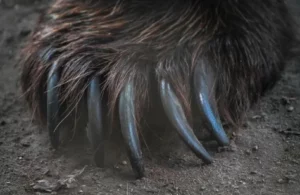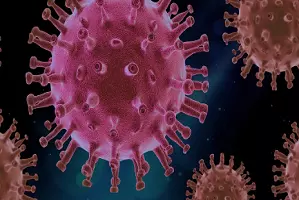Mammals: characteristics, types and examples
Mammals are a group of vertebrate animals made up of about 5,500 species. Despite being the group with the fewest number of species (followed by amphibians, with 7,300), mammals have successfully adapted to living in different habitats, both terrestrial and marine.
The largest animal, the blue whale ( Balaenoptera musculus ), belongs to the group of mammals , but also others of a tiny size, such as the dwarf bat ( Pipistrellus pipistrellus ) or the little shrew ( Suncus etruscus ), which weighs two grams is the smallest mammal. Despite these disparities, all mammalian species share a number of common characteristics, which we will discuss in this article.
Types of mammals

Mammals are divided into three orders: monotremes (5 species), marsupials (272 species), and placentals (5,209 species). What distinguishes placental mammals from other groups is that the embryo develops inside the maternal uterus through a placenta, an organ that allows the mother to supply oxygen and nutrients to the embryo. For their part, marsupial mammals have a bag called the marsupium where the mammary glands are located and the juvenile individual completes its development. Marsupials have characteristic bones that support the marsupium, which are not present in other mammals.
The monotremes , meanwhile, are the group of mammals with more primitive characteristics. They are oviparous (they lay eggs) and have a cloaca into which the ducts of the digestive, urinary and excretory systems flow. They produce milk to feed the young, like the rest of mammals, but they lack developed mammary glands, so the milk spreads in two areas of the abdomen called mammary fields. The teeth are atrophied or absent in monotreme mammals, and they have a beak-shaped snout. They lack lacrimal glands in the eyes.
What are mammals? Features and examples

Mammals are a monophyletic group, which means that all species, current or extinct, share a common ancestor and common characteristics. Likewise, many of these characteristics are unique to mammals, not being present in other vertebrates.
The main characteristic, from which the name of the group comes, is that they have modified sweat glands that produce milk to feed the young, the mammary glands . All mammals have mammary glands, including species of aquatic life such as whales.
Another important characteristic, which serves to distinguish mammals in the fossil record, is that the jaw is made up of a single bone . In other animal groups the jaw, if it exists, is made up of several joined bones. Another bone characteristic of mammals is that they have seven cervical vertebrae . All mammals, from the shrew to the giraffe , share this trait.
Mammals generally have a well-developed sense of hearing . Some species can perceive ultrasound (dogs or bats) and others detect infrasound (whales). It is believed that the sense of hearing evolved twice independently, as the middle ear of monotremes is different from that of placental and marsupial mammals. The latter have three bones that transmit sound, called hammer, anvil and stirrup, derived from the jaw of reptiles.
There are also mammals that have external ears, which allows them to better capture sound, although this characteristic has been lost in aquatic species for hydrodynamic reasons. While some species are capable of moving their pinna and orienting them toward the focus of sound (such as dogs), humans lack this ability.
The body of mammals is covered by skin, made up of an outer layer or epidermis and an inner layer or dermis, which may have an insulating layer of fat underneath. This provides adequate insulation against temperature and protects from drying out. The mammals are warm – blooded animals , since they can keep within limits your body temperature constant. The sweat and mammary glands open on the outside of the skin.
Various structures arise from the skin of mammals, the most important of which is hair. It is another characteristic of this group, not present in the rest of the animals. All mammals have hair at some point in their development, although some only in the embryonic stage of development . Other corneal structures present in mammals are nails, claws, hooves, hooves, horn or beak in the case of monotremes.
The presence of venom is rare in mammals , unlike other groups such as amphibians or reptiles. Even so, there are several species that possess poisonous substances. Some small mammals belonging to the orders Chiroptera (bats) and Eulipotyphla (shrews) have poisonous glands in their mouth, while monotremes have a spur on their hind limbs connected to a venomous gland. The toxins are used by these animals to capture their prey.
Reproductive characteristics
As a general rule, mammals have separate sexes in individuals of a species. The only known exception are the females of some species of mole ( Talpa sp.), Which have fertile testes. In these species, the ovarian part and the testicular part develop and atrophy periodically, so that only one is active at any one time. The fertilization of mammals is internal and the development of the offspring takes place within the body of the mother . Most species are viviparous except the monotremes, which are oviparous and therefore lay eggs.
The number of pups per litter and the length of gestation vary widely between species. There is, however, a correlation between the size of the adult individual and the length of gestation and the number of offspring . The larger the adult size, the longer the gestation and the lower the number of pups per litter. Most mammals care for their young during the early stages of their development.
The mammal with the longest gestation period is the African elephant ( Loxodonta africana ), with a duration of 22 months . That of the blue whale lasts 12 months and that of the sperm whale ( Physeter macrocephalus ) up to 16. At the other extreme are several species of shrews whose gestation does not exceed one month. Regarding the number of young, the species of mammal that can have more offspring per litter is the common tenrec ( Tenrec ecaudatus ), a small animal native to Madagascar and similar to a shrew that can have about thirty offspring per litter.




